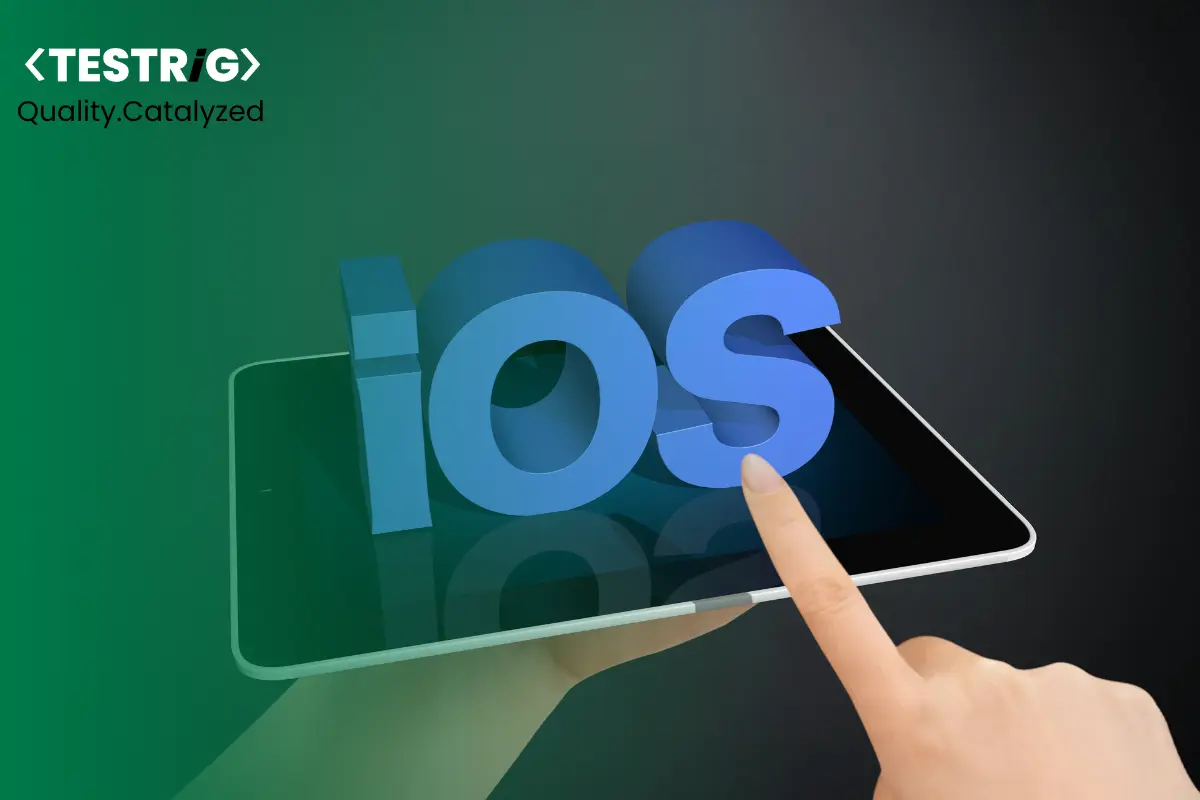
With the advancement of smartphone technology, almost every individual owns a smartphone nowadays. Therefore, application developers have to ensure that the apps perform effectively on a wide range of devices. Enterprises should ensure that the user interfaces on their mobile app functions smoothly and does not frustrate users. Therefore, the use of automation testing becomes quite evident for all mobile applications.
Appium is an important tool for automated iOS testing. With our Appium automation tutorial, you’ll be able to easily automate iOS app testing. We’ll go over the prerequisites and simple steps you need to follow for using Appium and Java for mobile app automation testing. Get started on your automated iOS testing journey today!
What is Appium?
Basically, Appium is an open-source test automation tool that runs on a client-server architecture. Appium has the capability for managing multiple WebDriver sessions alongside exposing the REST API. Most important of all, you get better outcomes of iOS automated testing using Appium with Selenium WebDriver API and language-centric client libraries for writing advanced test cases for cross-platform and native apps. The support of Appium for native, hybrid, and mobile web applications makes it the ideal choice for iOS app testing.
Business Benefits of Using Appium for Mobile Automation
1. Cost Savings: Appium’s open-source nature allows us to save money on licensing fees, making it a cost-effective option for mobile automation testing.
2. Cross-Platform Capability: With Appium, we can write and execute tests for multiple platforms using a single codebase, increasing efficiency and reducing the time and cost of testing.
3. Faster Time-to-Market: By automating iOS mobile testing with Appium, we can speed up the testing process, detect bugs earlier, and deliver the app to market faster.
4. Improved Test Coverage: Appium’s advanced features allow us to run complex tests that cover a wide range of scenarios, improving test coverage and reducing the likelihood of bugs.
5. Enhanced Quality: Appium’s ability to automate iOS mobile testing ensures consistency and accuracy, reducing the risk of human errors and improving the overall quality of the app.
Read also:- Why Select Appium Test Automation Tool Over Other Tools?
How To Automate iOS App Using Appium
The first step in how to automate the iOS app using Appium is to fulfill the prerequisites.
- The first prerequisite is the installation of HomeBrew. You can install HomeBrew by entering the following command in the terminal.
/usr/bin/ruby -e “$(curl -fsSL https://raw.githubusercontent.com/Homebrew/install/
Now, type the command ‘brew –v’ and hit enter to find the version information.
- Write the command ‘brew install node’ for the installation of Node.js. Users can verify the installation by entering the ‘node –v’ command for finding the version information.
- If you want the answer to how to automate web applications using Appium, you need to download Appium. Enter the command ‘npm install –g appium’ in the terminal and hit the enter key for installing the latest Appium version. Users can verify the installation by executing the ‘appium –v’ command that shows the Appium version.
The other prerequisites for appium mobile automation framework include the live mobile device dependency, ios-deploy, WebDriverAgent, and Carthage, a decentralized dependency manager for Cocoa.
- The first step in an Appium iOS Java example for app testing refers to devise definitions. You need to define the iOS device by specifying the Name, UDID, URL information of Appium Server, and Version of iOS.
- Then, you have to define the functions that you will use in the automation testing project in the BasePage class.
- Finally, you can write test cases by writing functions in the page classes and using them in test classes for the creation of test cases.
How To Run The Appium Test On iOS?
Once you have created the test case, you can use it to run iOS automation tests in windows using Appium. Here is an outline of the automation process on Appium.
- Locate the Unique Device Identifier (UDID) of the iOS device.
- Activate the Web Inspector on the iOS device by accessing the “Advanced” tab in the “Settings” for the Safari browser.
- Type the following command in the Terminal prompt.
“/usr/bin/ruby -e “$(curl -fsSL https://raw.githubusercontent.com/Homebrew/install/master/install)”
- Install the ios_webkit_debug_proxy for accessing web views on the iOS device. Run the following commands in consecutive order for installing the latest tagged version of ios_webkit_debug_proxy.
- Enter the following command in the terminal for starting proxy on port 27753.
ios_webkit_debug_proxy -c <Connected device UDID>:27753 –d
- Now, you can open the Appium application and select “Appium Doctor” for opening a terminal and checking the validity of the setup for automation.
Conclusion
Appium is like a magic wand for automating iOS app testing. With Appium, you can easily write and execute test scripts, saving time and improving the efficiency of the testing process. By following the steps in this guide, you’ll be able to run Appium tests on your iOS app, whether on real devices or emulators, and make app development a breeze. So go ahead and wave the Appium wand to transform your iOS app testing process!
If you’re looking to automate your mobile app testing with Appium, Testrig Technologies is here to help. As a leading mobile app automation testing company, we specialize in mobile automation testing services, providing end-to-end solutions to ensure your app is fully functional and bug-free. Our expert team leverages Appium to create robust test frameworks, streamline execution, and enhance test coverage across devices and platforms.


